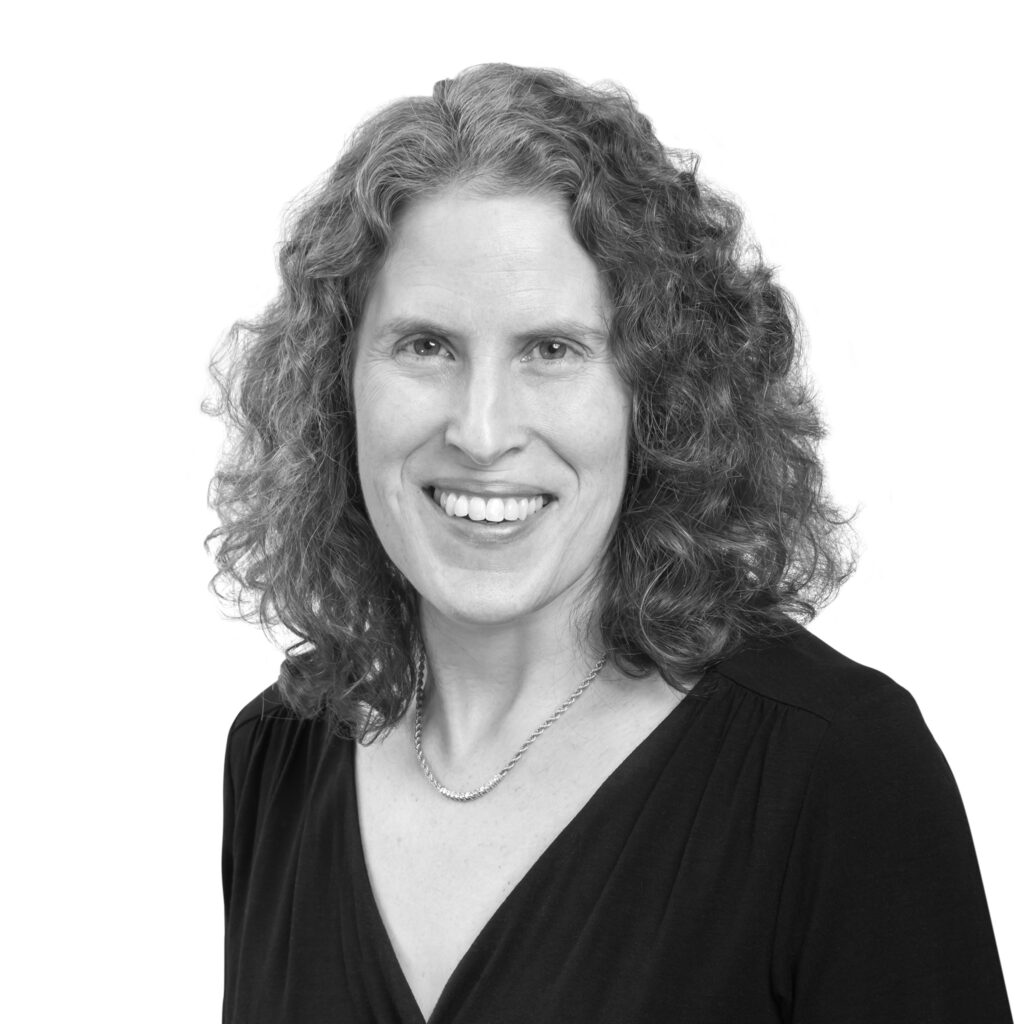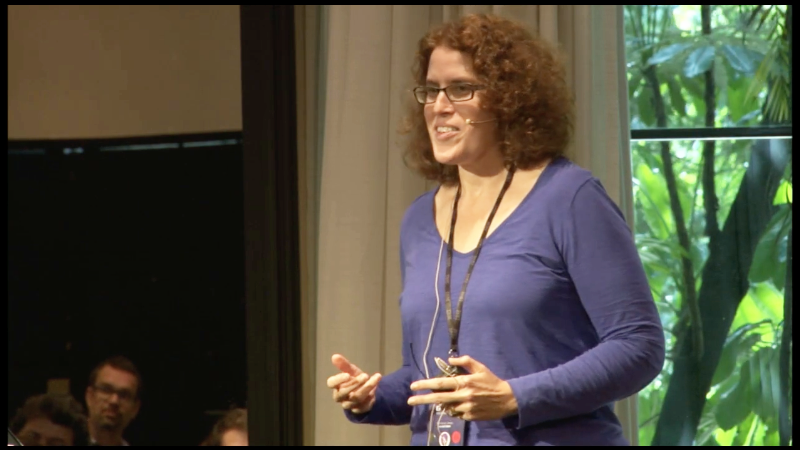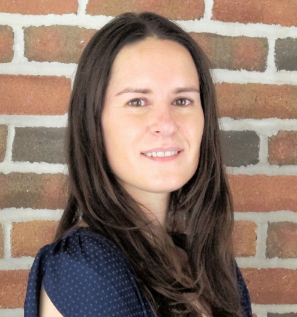 What do historical landscapes or tacit knowledge have to do with reimagining the future of shipping or location intelligence services? In linking everyday practices with wider forces of complex organizational systems, Alex Mack argues that thinking anthropologically about infrastructure—as both a technical system and a relational process—can help reveal new directions for design interventions. A Senior Fellow at Pitney Bowes and a member of the EPIC Board, Alex’s work has had significant impact in her organization and far beyond.
What do historical landscapes or tacit knowledge have to do with reimagining the future of shipping or location intelligence services? In linking everyday practices with wider forces of complex organizational systems, Alex Mack argues that thinking anthropologically about infrastructure—as both a technical system and a relational process—can help reveal new directions for design interventions. A Senior Fellow at Pitney Bowes and a member of the EPIC Board, Alex’s work has had significant impact in her organization and far beyond.
Alex recently sat down for an interview to share insights from her career. She reflected on how early ethnographic field work studying ancient urban landscapes as a PhD student helped shape her research sensibilities and worldview. In transitioning from academia to industry, this deeply social way of seeing the world continues to influence her work at Pitney Bowes, both for addressing immediate client needs and in developing strategic organizational directions in a dynamic business environment.
Early Training in Anthropology
As an undergraduate Alex found herself drawn to anthropology because of the wide variety topics she could explore under one concentration. Contemplating future career directions at the end of college, however, she didn’t know there were options in anthropology outside the academy. “I had the impression that to be a social anthropologist you need to go live in the Amazon for a few years,” she laughed. After graduation, she took a museum job working with the Near East archaeological collection at the University of Pennsylvania. This experience inspired her to complete a master’s degree at the University of York in archaeology, followed by a PhD at Arizona State University, where she worked at a range of archeological sites from the American Southwest to the Middle East.
In her dissertation fieldwork at Vijayanagara, the capital of an empire that covered most of south India from the 14th to 16th centuries, Alex connected her long-held intellectual interest in social anthropology with archeological investigations into material culture. “I was very interested in how people make use of space, especially in highly dense areas,” she explained. She ended up writing her dissertation on pilgrimage to the temples in Vijayanagara (Mack, 2004):
“It was archeology and I was working with ruined buildings, but I was looking at economic evidence through ceramics and grinding stones, as well as pilgrimage as a highly social activity. I wanted to understand how different people see and use a landscape, and how landscape imparts itself into ideology, beliefs and worldviews.”

Transitioning into Industry
Although Alex started the PhD thinking she would eventually teach or work in a cultural institution, part way through her program she found herself wanting to explore options beyond the domains she had originally envisioned. She realized that as much as she loved the research she was doing, she had a broad range of interests beyond it. Networking at the American Anthropological Association meeting opened her eyes to the possibilities of a career path in design and she started doing informational interviews and applying for jobs.
Alex reflected on how professors and fellow graduate students reacted to her efforts in the 1990s to secure an industry job straight out of academia with a mixture of curiosity and skepticism. Cultural anthropology was a more common path to design jobs than was archaeology, and in job interviews she focused on her understanding of material culture as well as her project management experience. After a few years consulting, she got a position doing ethnographic research at Pitney Bowes, a company she’s now been with for over 14 years.
Evolving Roles and Research Trajectories
Being hired as an anthropologist in a traditional, technology-based R&D group at Pitney Bowes has had both benefits and challenges. Alex is often the only person with ethnographic training working on teams of engineers and product managers. A part of a fast-paced design lab, for instance, she noted tensions in using ethnographic methods to meet specific client deliverables over short project timelines: “Some of the actual field projects you get on have been very targeted because of the nature of what we’ve been asked to do,” she explained. “So it’s like, ‘Ok, I’m doing a very little targeted piece of work for a very specific thing somebody wants delivered.” This type work also stretched her to apply academic insights—formed around investigating the lived experience of ancient spaces—to the dynamic processes of design. “How do I bring in what else I know as I talk to people? And learn stuff in a way that this data feeds into a larger view of the world as well?”
A strong background in anthropological theory helped shape this uniquely social research sensibility. “I realized as an ethnographic practitioner in industry, I am influenced by this whole ream of background I have. I can’t always point to a specific article, but I can tell that my approach to the world is influenced by theory.” Daily interactions with diverse teams comprised of business managers, product designers, and technologists reveal the value anthropologists bring to industry settings: “That’s when I notice the way that I see and interpret the world is different from how other researchers, even other user researchers, see and interpret the world.” Having people who come at problems from a wide range of perspectives is essential to creating products and services in a B2B environment like Pitney Bowes. “Design thinking is a fantastic thing, but there is a social side of thinking that is also very powerful and should be seen as complementary, not in opposition to design thinking.”
Over the course of her career as an ethnographic practitioner, Alex has also made an effort to pursue opportunities for longer-term projects that allow for a deeper engagement with fieldwork. During a period of corporate restructuring at Pitney Bowes, for example, she volunteered to move from an interdisciplinary design lab group to largely engineering group doing technology development. Through her fieldwork embedded with the technology team, she saw organizational processes from a new perspective. “We’re a mailing company. We think about our clients, our customers being the senders of mail. So I went, ‘Wait a minute. What about the people who receive it?’” Putting together a program of research on “recipients” led to reframing communication practices as a part of people’s social worlds.
In her current position as a Senior Fellow at Pitney Bowes, Alex finds herself spending more time focused on strategy. Her primary challenge is taking that embedded knowledge and applying it widely to different large-scale problems, such as company growth. “I’m spending more time trying to say, “Hey, based on what we know of the world, here’s how we should be approaching things.”

Learning with the EPIC Community
Alex has had a significant impact at Pitney Bowes. Senior Fellow status is a major achievement and social scientists are rarely recognized in this technical ladder; Alex is the only one at PB. Yet she acknowledges that the business environment can leave little space for engaging theory and making the deeper analytical connections. EPIC has addressed this need for Alex in both providing a forum for continued intellectual development and a supportive community who shares similar challenges and interests.
“In EPIC we are trying to push ethnographic thinking not only around products and services, but also business strategy and organizational strategy. There is still a lot of space and room to be pushing for how ethnographic practice writ large can influence the world on these other levels as well. How are you organizing your work? How are you thinking about changing the world? That’s on the edges still.”
Sorting through (and making visible) the broader impact and tensions in industry happens for Alex through participation with varied EPIC publications and events. One example of utilizing EPIC to wrestle with social and material forms of complexity—as an ethnographic practitioner, but also intellectually as an anthropologist—is her recent blog post on Susan Leigh Star’s concept of informational infrastructures (Star and Ruhleder, 1994; Bowker et al., 2015). “Inside a big corporation when I’m delivering something to a client they don’t want to hear my theories on infrastructure,” she acknowledged. “However, at the same time, in a sense writing that blog post was an outlet for me working through my frustrations, for me to say, ‘Okay, maybe in understanding what is going on it will help me get to something that will also be actionable internally.”
In a B2B environment like Pitney Bowes, Alex suggests that taking an infrastructural approach to design goes beyond launching a user-friendly product: it means intervening in complex organizational processes—the sociotechnial scaffolding—that shapes how the company interacts with its clients.
“You need to address the needs of different stakeholders within these systems. And there is some interesting theory out there about complex, adaptive systems. But then, how do you make change within systems? Moving one piece doesn’t necessarily move other pieces. You also don’t want to throw up your hands and say you can’t do anything. So you have to say, what pieces can you move to start making shifts? There are a lot of interlocking parts and its more complex than people realize sometimes.”
In this way, the EPIC community creates opportunities for anthropologists to reflect on deeper meanings in their work and find ways of articulating it back to a wider community in academia and industry.
References
Bowker, Geoffrey C., Stefan Timmermans, Adele E. Clarke, and Ellen Balka, eds. (2015). Boundary Objects and Beyond: Working with Leigh Star. Infrastructures. Cambridge, MA: The MIT Press.
Mack, A. (2004). One Landscape, Many Experiences: Differing Perspectives of the Temple Districts of Vijayanagara. Journal of Archaeological Method and Theory, Vol. 11, No. 1, Recent Advances in the Archaeology of Place, Part 1 (Mar., 2004), pp. 59-81.
Mack, A. (2016). Translating Infrastructure to Technology. EPIC Perspectives. Accessed September 20th 2016 from https://www.epicpeople.org/translating-infrastructure-to-technology/
Star, S. L. and Ruhleder, K. (1994). Steps towards an ecology of infrastructure: complex problems in design and access for large-scale collaborative systems. In Proceedings of the 1994 ACM conference on Computer supported cooperative work (CSCW ’94). ACM, New York, NY, USA, 253-264.
Images
Kapaleeshwarar Temple by Vinoth Chandar (CC BY 2.0) https://flic.kr/p/7qHzE5
Alex Mack performs her PechaKucha “Postal Poetry” at EPIC2015
Elizabeth Kaziunas is a doctoral candidate at the University of Michigan’s School of Information working in the areas of computer-supported cooperative work (CSCW), human-computer interaction (HCI), and health informatics. Her research, drawing on ethnographic methods and approaches to design, explores patient-centered perspectives on the management of chronic illness and technologies to support collaborative health information work in both clinical and community contexts. At Michigan, she is a member of the SocialWorlds research group led by Mark Ackerman, MISC (Michigan Interactive Social Computing), and an Open Data Research Fellow.
is a doctoral candidate at the University of Michigan’s School of Information working in the areas of computer-supported cooperative work (CSCW), human-computer interaction (HCI), and health informatics. Her research, drawing on ethnographic methods and approaches to design, explores patient-centered perspectives on the management of chronic illness and technologies to support collaborative health information work in both clinical and community contexts. At Michigan, she is a member of the SocialWorlds research group led by Mark Ackerman, MISC (Michigan Interactive Social Computing), and an Open Data Research Fellow.
Related
Translating Infrastructure to Technology, Alexandra Mack
Creating Business Impact, Alexandra Mack
Trajectories of Change in Global Enterprise Transformation, Jeanette Blomberg

0 Comments